As the culinary world continues to evolve, the contact grill has emerged as a popular appliance that offers both convenience and health benefits. With the growing trend of outdoor cooking and the increasing demand for efficient kitchen gadgets, the contact grill market has seen a surge in innovation and consumer interest. Understanding the nuances of this market, from key players to consumer preferences, is crucial for anyone looking to navigate the contact grill landscape successfully.
The Rising Trend of Contact Grills in Europe and America
The surge in popularity of contact grills in Europe and America has been nothing short of remarkable. These versatile cooking appliances have captured the hearts of culinary enthusiasts and busy professionals alike, offering a convenient and efficient way to achieve that perfect sear on a variety of meats. Let’s delve into the factors that have contributed to this rising trend.
Gone are the days when grilling was limited to outdoor barbecues or the backyard. Contact grills have found their way into kitchens across the continent, providing a solution for those who lack outdoor space or simply prefer the convenience of indoor cooking. The compact design and ease of use have made them a staple in urban homes and apartments.
One of the key drivers behind the popularity of contact grills is the demand for healthier cooking options. With a focus on wellness and fitness, consumers are increasingly seeking low-fat cooking methods that still deliver delicious flavors. Contact grills, with their ability to cook with minimal oil, fit perfectly into this trend, offering a healthier alternative to traditional frying methods.
The versatility of contact grills is another factor that has contributed to their rise in popularity. These appliances can sear, sauté, grill, and even bake, making them a multipurpose tool in the kitchen. From juicy burgers to tender steaks, the ability to cook a wide range of dishes has made contact grills a must-have for many home chefs.
European and American consumers have also been influenced by the rise of food blogs, cooking shows, and social media platforms. Influencers and chefs have been showcasing the possibilities of contact grills, inspiring a new generation of home cooks to explore their culinary skills. The visual appeal of perfectly cooked food, often shared on Instagram and Facebook, has created a buzz around these cooking appliances.
Moreover, the technological advancements in contact grill design have played a significant role in their popularity. Modern contact grills come with features like adjustable heat settings, non-stick surfaces, and even integrated temperature controls. These innovations have made cooking more precise and ensured that food is cooked to perfection every time.
The convenience of contact grills cannot be overstated. With their compact size and ease of cleaning, they are a practical choice for those who value time-saving appliances. Whether it’s a quick weeknight dinner or a weekend family gathering, contact grills offer a quick and efficient way to prepare delicious meals.
In Europe, the trend towards contact grills has been further fueled by the popularity of outdoor dining. Even in areas where space is limited, individuals are seeking ways to enjoy the taste of outdoor cooking indoors. Contact grills provide a solution that allows for that same smoky flavor and charred texture without the need for an actual grill.
In America, the contact grill market has been bolstered by the diverse culinary landscape. From the classic American barbecue to the fusion cuisine found in urban centers, contact grills have become a staple in kitchens that cater to a variety of tastes and preferences.
The environmental consciousness of consumers has also had an impact on the contact grill market. With the growing awareness of the importance of sustainability, individuals are seeking appliances that are energy-efficient and have a minimal carbon footprint. Contact grills, being small and portable, often meet these criteria, making them an eco-friendly choice.
In conclusion, the rising trend of contact grills in Europe and America is a testament to the evolving culinary landscape. As consumers continue to seek healthier, versatile, and convenient cooking solutions, contact grills are poised to remain a favorite in the hearts of home cooks and culinary adventurers alike.
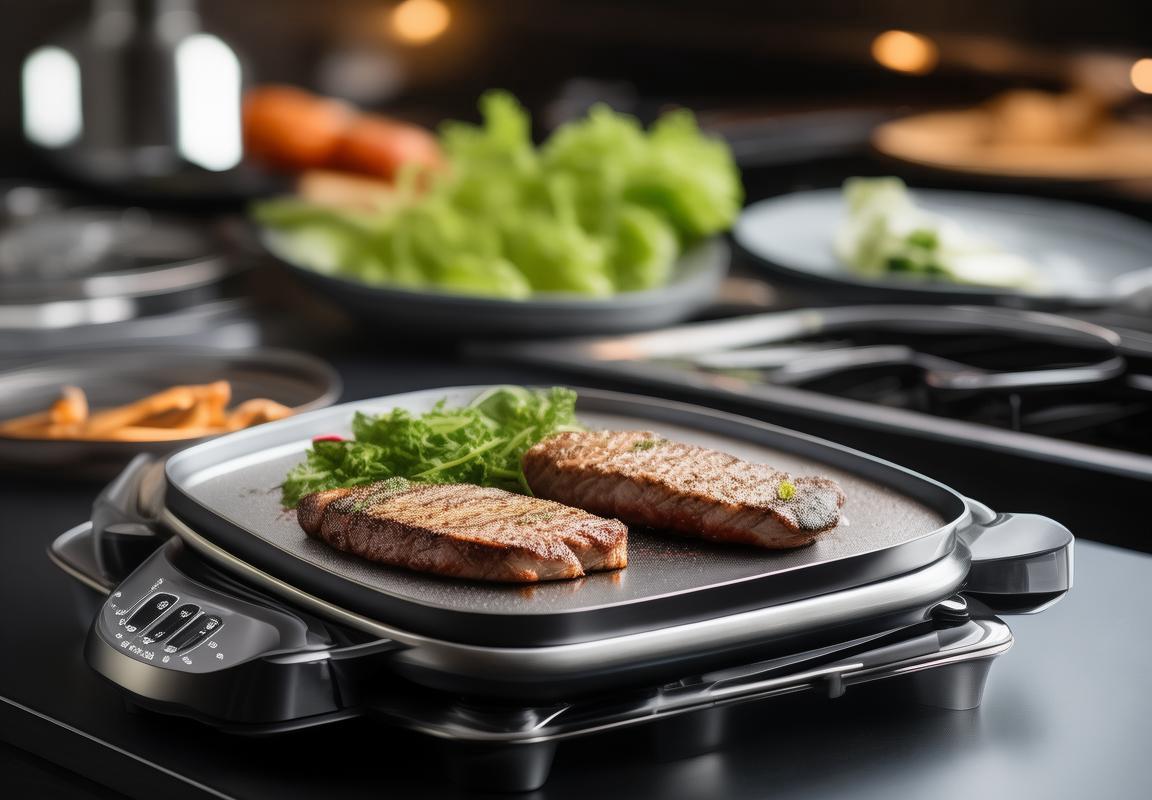
Understanding the Contact Grill Market Dynamics
The contact grill market in Europe and America has seen a surge in popularity, driven by several key dynamics that are reshaping the landscape. One of the most significant trends is the growing demand for convenience and health-conscious cooking methods. Consumers are increasingly seeking quick and easy ways to prepare delicious meals without compromising on flavor or nutritional value.
-
The Shift Towards Healthy CookingHealth and wellness have become paramount in the culinary world, and contact grills have capitalized on this trend. With their ability to cook food with minimal oil, these grills offer a healthier alternative to traditional cooking methods like frying or broiling. This focus on health has made contact grills a favorite among health-conscious consumers looking to maintain a balanced diet.
-
Technological AdvancementsAs technology continues to evolve, so does the contact grill market. Innovations such as non-stick surfaces, adjustable temperature controls, and integrated cooking timers have enhanced the user experience and made contact grills more versatile. These advancements have not only improved the cooking quality but have also made the grills more user-friendly.
-
Consumer Lifestyle ChangesThe fast-paced lifestyle of modern society has led to a demand for quick and efficient cooking solutions. Contact grills fit this bill perfectly, offering a way to prepare a meal in a fraction of the time it would take on a traditional grill. This convenience factor has made contact grills a staple in many European and American kitchens.
-
Brand DiversificationThe contact grill market is no longer limited to a few large brands. Smaller, niche players have entered the scene, offering unique features and designs that cater to specific consumer needs. This diversification has created a more competitive market, with brands constantly innovating to stand out.
-
Cross-Over AppealContact grills have also seen a rise in cross-over appeal, attracting consumers who might not traditionally be interested in outdoor grilling. The compact size and ease of use make them suitable for apartments and smaller living spaces, broadening the target market.
-
Seasonal FluctuationsWhile the demand for contact grills remains steady throughout the year, there are notable seasonal fluctuations. The summer months often see a spike in sales as consumers look to enjoy the taste of grilled food indoors, especially when outdoor grilling is not an option due to weather or space constraints.
-
Marketing StrategiesEffective marketing has played a crucial role in the growth of the contact grill market. Brands have leveraged social media, influencer partnerships, and targeted advertising campaigns to reach a wider audience. Highlighting the health benefits, convenience, and versatility of contact grills has been a key strategy in driving sales.
-
Distribution ChannelsThe distribution channels for contact grills have expanded, with an increase in online sales through e-commerce platforms. This shift has allowed manufacturers to reach consumers more directly and has also provided customers with a broader range of options and competitive pricing.
-
The Role of Reviews and TestimonialsCustomer reviews and testimonials have become a significant factor in the contact grill market. Positive feedback from satisfied customers has a powerful influence on new buyers, often leading to increased sales. Brands that actively engage with their customers and encourage reviews are likely to see better market performance.
-
Regulatory ComplianceAs with any product, regulatory compliance is a critical aspect of the contact grill market. Ensuring that products meet safety standards and are free from harmful substances is essential for maintaining consumer trust and avoiding legal issues.
-
The Future OutlookLooking ahead, the contact grill market is expected to continue growing, driven by ongoing technological advancements, an increasingly health-conscious consumer base, and the ongoing demand for convenience. Brands that can adapt to these dynamics and continue to innovate are well-positioned to capture a significant share of the market.
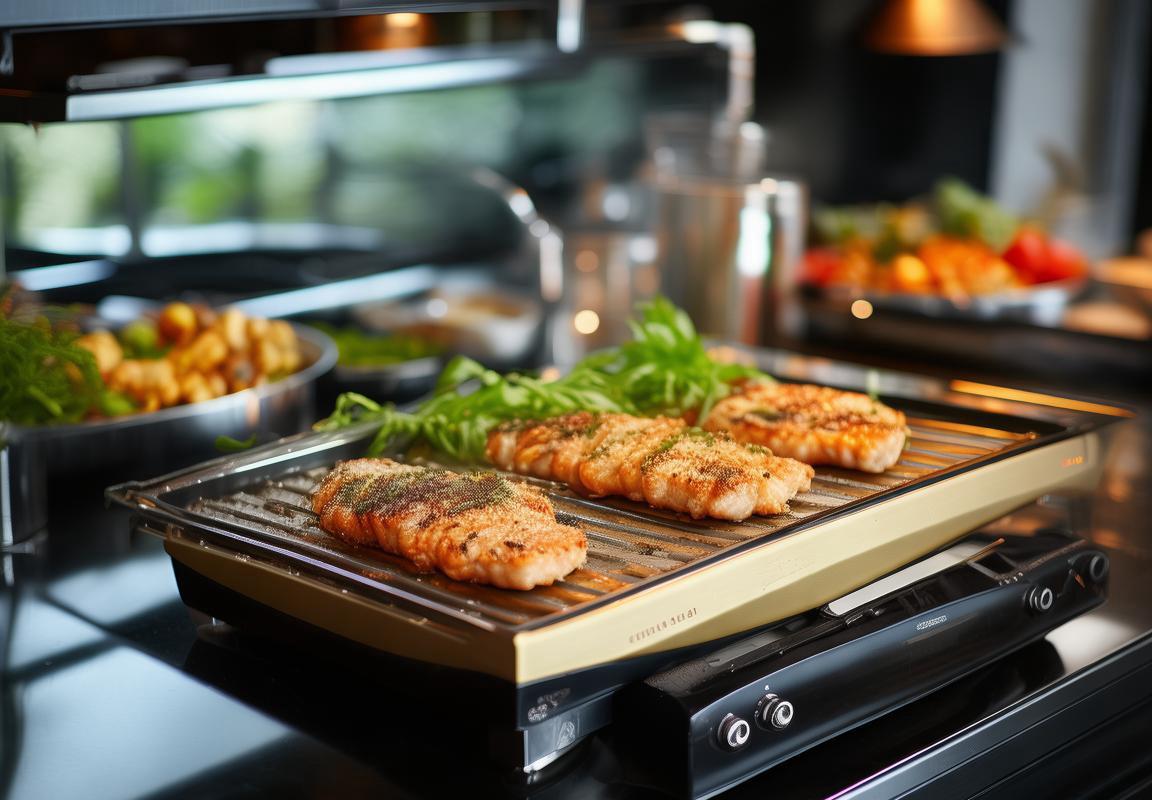
Key Players in the Contact Grill Industry
In the competitive landscape of the contact grill industry, several key players have emerged as industry leaders, each bringing their unique strengths and market strategies. Here’s a closer look at some of the major players shaping the market:
-
Breville – A household name in kitchen appliances, Breville has made a significant mark in the contact grill market with its sleek designs and advanced features. Known for their high-quality products, Breville’s contact grills are favored for their even heat distribution and non-stick surfaces.
-
George Foreman – The George Foreman brand has become synonymous with contact grills, thanks to its iconic design and commitment to healthy cooking. The company has expanded its product line to include various models, catering to different consumer needs and preferences.
-
Cuisinart – As a well-respected name in kitchen appliances, Cuisinart offers a range of contact grills that are both versatile and durable. Their grills are often praised for their easy-to-use features and ability to produce delicious, evenly cooked food.
-
Hamilton Beach – This brand is known for its affordable yet reliable kitchen appliances, and their contact grills are no exception. Hamilton Beach’s grills are popular for their straightforward functionality and affordability, making them a go-to choice for budget-conscious consumers.
-
Black & Decker – Black & Decker has a reputation for producing durable and efficient appliances, and their contact grills are no different. These grills often come with added features like adjustable heat settings and removable drip pans for easy cleaning.
-
Breville Barista Express – Although primarily known for its coffee makers, Breville has ventured into the contact grill market with the Barista Express. This model combines the brand’s expertise in precision cooking with the convenience of a contact grill, appealing to coffee enthusiasts and grill lovers alike.
-
Oster – A division of Conair, Oster offers a variety of kitchen appliances, including contact grills. Their grills are designed to provide fast and even cooking, with features like removable plates for easy cleaning and temperature control settings.
-
Instant Pot – Although not traditionally associated with grills, Instant Pot has expanded its product line to include a contact grill that combines the pressure cooking technology with the convenience of grilling. This innovative approach has attracted a wide audience looking for multifunctional kitchen appliances.
-
Cuisinelle – This brand is known for its stylish and innovative kitchenware, and their contact grills are no exception. Cuisinelle’s grills are designed with modern aesthetics in mind, offering a premium look and feel that appeals to consumers who value both form and function.
-
Sunbeam – A well-established name in small kitchen appliances, Sunbeam offers contact grills that are both efficient and user-friendly. Their grills often feature non-stick surfaces, easy-to-use controls, and additional features like adjustable heat settings.
These key players in the contact grill industry have not only shaped the market with their innovative products but have also influenced consumer expectations and the overall direction of the category. As the industry continues to evolve, these companies are likely to remain at the forefront, driving innovation and competition.
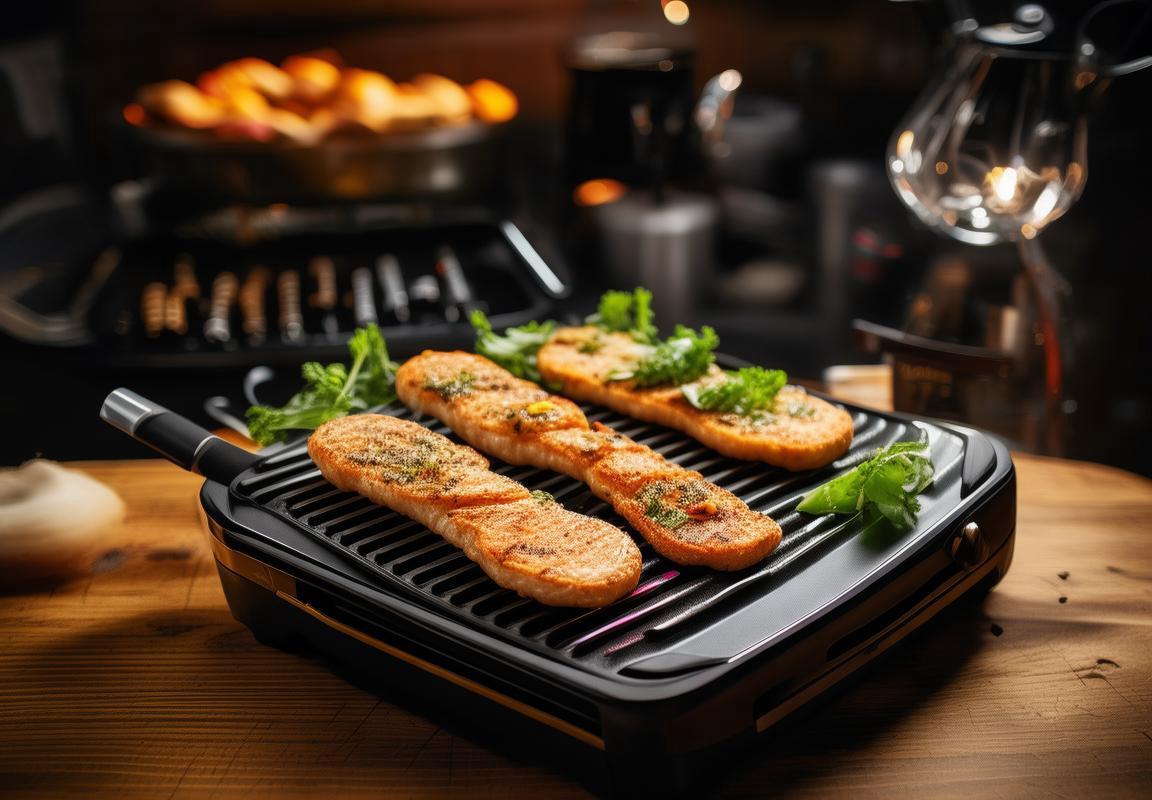
Consumer Preferences and Trends in the U.S. and Europe
In the ever-evolving landscape of kitchen appliances, consumer preferences and trends in the U.S. and Europe have a significant impact on the contact grill industry. Here’s a closer look at what’s shaping the market:
Gone are the days when outdoor grilling was the sole domain of summer barbecues. Today, the convenience and efficiency of contact grills have made them a staple in many American and European households. From compact countertop models to larger, oven-like units, the variety has expanded, catering to diverse consumer needs.
Health-conscious consumers are driving the demand for contact grills. The ability to cook with less oil and achieve a consistent sear appeals to those looking for healthier cooking alternatives. This trend has prompted manufacturers to innovate with non-stick surfaces and adjustable temperature controls, ensuring that both taste and health are maintained.
In the U.S., there’s a noticeable preference for high-tech features. Smart grills that can be controlled via smartphone apps and offer a range of cooking modes have gained popularity. The integration of Bluetooth technology for temperature monitoring and even cooking has become a key selling point.
On the other hand, in Europe, there’s a strong emphasis on design and sustainability. Consumers are not just looking for a functional appliance but one that complements their kitchen aesthetic and adheres to eco-friendly practices. This has led to the rise of sleek, modern designs and the use of recycled materials in contact grill manufacturing.
The U.S. market is also influenced by the growing popularity of outdoor living spaces. As people spend more time in their patios and gardens, the demand for portable and easy-to-use grilling solutions has surged. This has sparked an interest in portable contact grills that can be brought to picnics or camping trips.
In Europe, there’s a trend towards versatility in kitchen appliances. Contact grills that can double as sandwich makers or panini presses are increasingly popular, reflecting the desire for multifunctional devices that save space and time.
Another significant trend is the rise of gourmet cooking at home. As people seek to elevate their culinary skills, contact grills offer a way to achieve restaurant-quality results without the need for a full-sized grill. This has led to a market for grills with adjustable heat zones and various cooking surfaces, from flat to ridged, to accommodate different types of food.
The U.S. and European markets also see a strong focus on customer reviews and social proof. Consumers are more likely to purchase a contact grill if it has positive feedback from others who have tried it. This has influenced manufacturers to invest in user-friendly designs and intuitive interfaces that make it easy for new users to get the most out of their appliances.
Lastly, the impact of celebrity chefs and cooking shows cannot be overlooked. The exposure of high-quality contact grills on these platforms has helped to educate consumers about the benefits of these appliances and has contributed to their growing popularity.
In summary, consumer preferences and trends in the U.S. and Europe are shaped by a combination of health consciousness, technological advancements, design aesthetics, and the desire for convenience and versatility. As the contact grill industry continues to evolve, it will be fascinating to see how these trends continue to influence the market and the products that manufacturers develop.
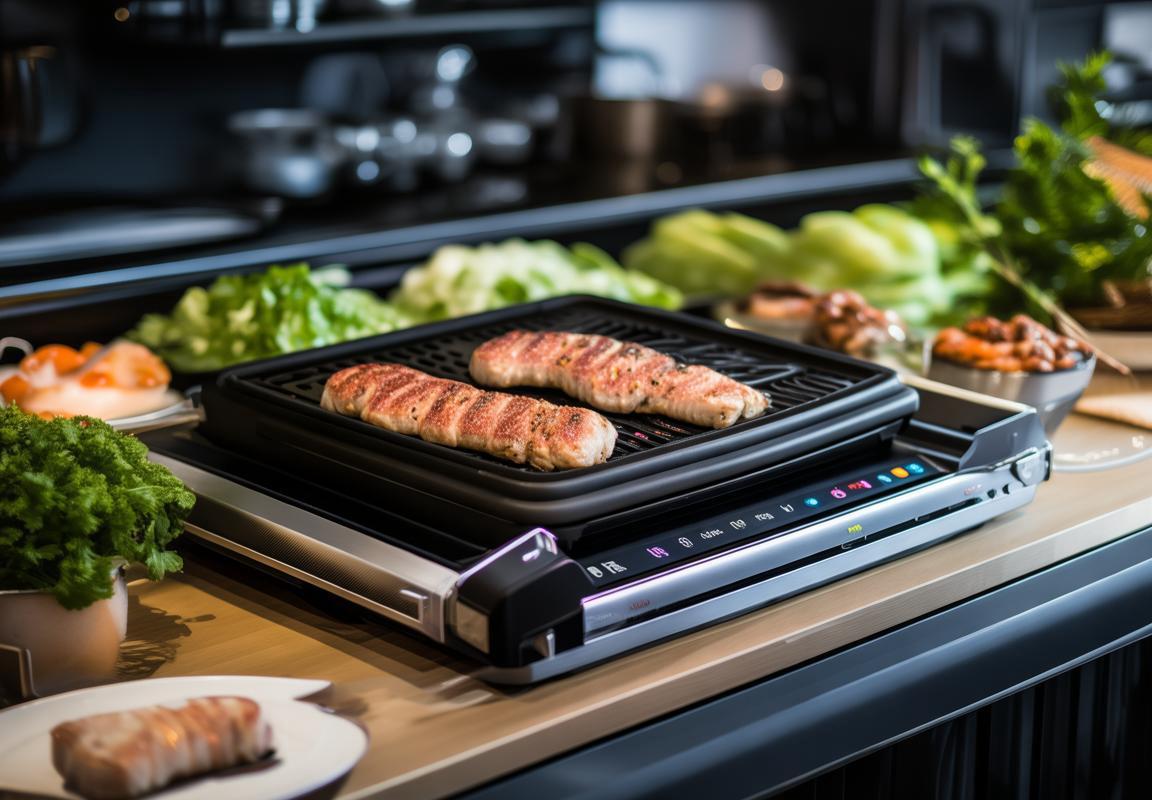
Innovations in Contact Grill Technology
The contact grill market has seen a surge in technological advancements, leading to a wave of innovations that have transformed the way consumers cook and enjoy their meals. From smart features to improved efficiency, here’s a closer look at some of the notable innovations shaping the contact grill technology landscape.
Grill Surface Materials Have EvolvedGrill surfaces have come a long way from the traditional cast iron or steel. Modern contact grills now feature non-stick coatings, which make cleanup easier and ensure food releases smoothly. Additionally, some high-end models are incorporating advanced materials like ceramic or titanium, which are known for their durability and heat retention properties.
Smart Grilling TechnologyThe integration of smart technology into contact grills has revolutionized the grilling experience. Many new models are equipped with digital controls that allow users to set precise temperatures and cooking times. Some even offer wireless connectivity, enabling remote monitoring and control via a smartphone app. This level of customization and convenience has made grilling more accessible and enjoyable for tech-savvy consumers.
Variable Heat ZonesInnovative contact grills now often come with multiple heat zones, allowing for more control over cooking temperatures. This feature is particularly beneficial for cooking different types of food at the same time, such as searing a steak while keeping vegetables on a lower heat setting. It also enables more even cooking, reducing the risk of overcooking or undercooking certain parts of the meal.
Automatic Cleaning SystemsCleaning up after a grilling session can be a hassle, but manufacturers have introduced automatic cleaning systems to simplify the process. Some contact grills have built-in steam cleaning functions that use water and heat to loosen and remove food particles, while others feature a self-cleaning mode that uses high heat to burn off residue. These features not only save time but also contribute to the longevity of the grill.
Improved Heat DistributionHeat distribution has always been a key concern for contact grill users. Newer models often include innovations like a ceramic-lined grill plate that ensures even heat distribution across the cooking surface. This not only improves the quality of the food but also extends the life of the grill, as hot spots can cause uneven wear over time.
Temperature Control InnovationsTemperature control has been a focal point for contact grill manufacturers. Many have developed more sophisticated thermostats and heating elements that maintain a consistent temperature throughout the cooking process. Some models even feature dual-zone heating systems that can independently control the top and bottom plates, providing even more precise cooking control.
Safety FeaturesSafety has always been a priority in kitchen appliances, and contact grills are no exception. Modern innovations include features like automatic shut-off when the lid is opened, cool-to-the-touch handles, and anti-slip bases. These additions not only protect users but also ensure that the grill stays in good condition for longer.
Enhanced Cooking OptionsBeyond the basics, contact grills are now offering a variety of cooking options. Some models can be used as indoor grills, panini makers, or even as a sandwich press. The versatility of these appliances has expanded, making them a more valuable addition to any kitchen.
Environmentally Friendly InnovationsWith growing concerns about sustainability, some contact grill manufacturers are focusing on eco-friendly features. This includes using recycled materials in the construction of the grills, energy-efficient heating elements, and even biodegradable components. These innovations are appealing to consumers who are conscious of their environmental footprint.
The integration of these technological advancements in contact grill technology has not only enhanced the user experience but has also broadened the appeal of these appliances. As consumers seek out more efficient, versatile, and user-friendly cooking solutions, the contact grill market continues to evolve, offering a wide array of options that cater to diverse preferences and needs.
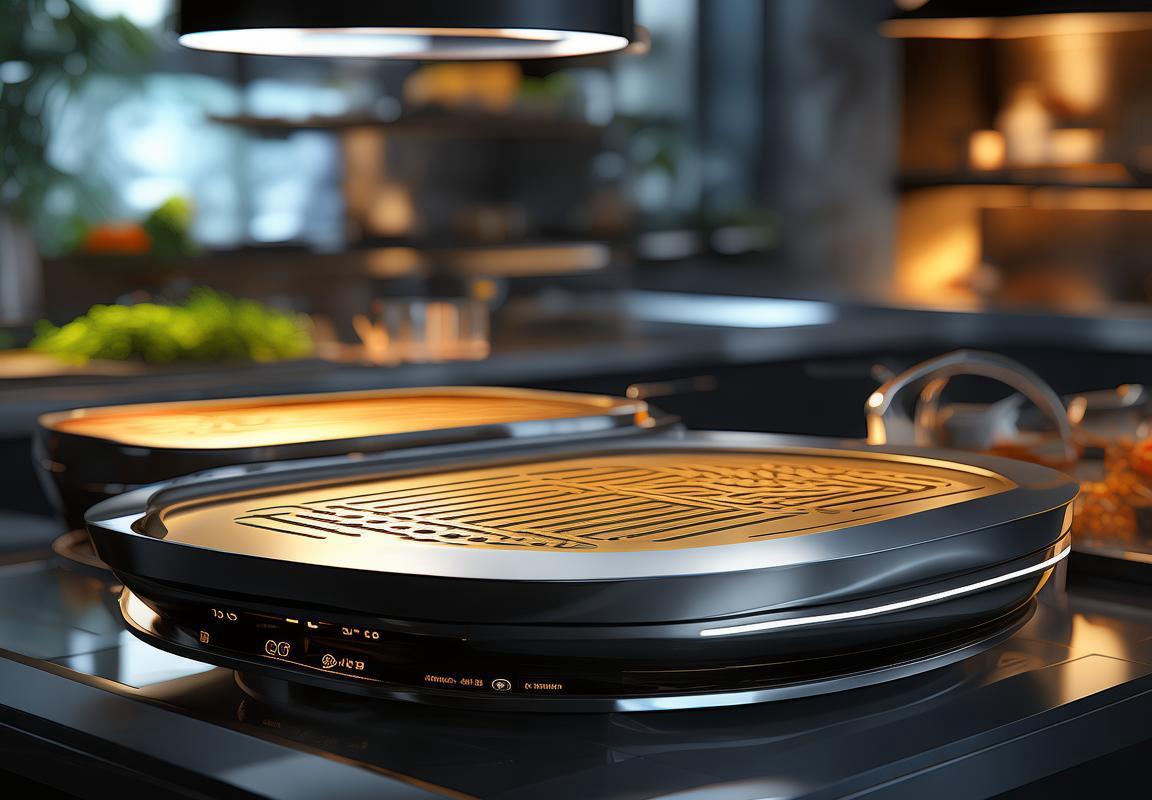
The Impact of Sustainability on Contact Grill Suppliers
In recent years, the emphasis on sustainability has grown exponentially, influencing the operations of businesses across various industries. The contact grill market is no exception, with suppliers feeling the ripple effects of eco-conscious consumer demands. Here’s how sustainability is reshaping the landscape for contact grill suppliers:
The Shift Towards Eco-Friendly MaterialsManufacturers are increasingly focusing on the sourcing of materials for contact grills. Recycled metals, sustainable woods, and biodegradable plastics are becoming more prevalent as suppliers strive to reduce their carbon footprint. This shift not only aligns with consumer expectations but also opens up new opportunities for suppliers to innovate and differentiate their products.
Energy Efficiency and Smart CookingEnergy consumption is a significant concern for consumers, and contact grill suppliers are responding by integrating energy-efficient features into their products. Smart grills that optimize cooking times and temperatures not only save on energy bills but also reduce greenhouse gas emissions. Suppliers are investing in research and development to create contact grills that are both powerful and eco-friendly.
Warranty and Service Life ExtensionsTo address the sustainability issue, some suppliers are extending the warranties on their contact grills. By doing so, they encourage consumers to invest in a product that will last longer, reducing the frequency of replacements and the subsequent waste. This approach also promotes customer loyalty and supports a circular economy model.
Recycling Programs and End-of-Life SolutionsSuppliers are implementing recycling programs and offering take-back services for their contact grills. By doing this, they ensure that the products are responsibly disposed of at the end of their life cycle. Some are even designing their grills with modular components that can be easily replaced or recycled, further reducing waste and promoting a more sustainable product lifecycle.
Sustainable PackagingPackaging is another area where contact grill suppliers are making strides. Biodegradable or compostable packaging materials are becoming standard, reducing the environmental impact of shipping and storing products. Suppliers are also looking into minimizing packaging size and weight to reduce transportation emissions.
Certifications and TransparencyConsumers are becoming more discerning about the brands they support, and sustainability certifications are playing a crucial role in this decision-making process. Suppliers that obtain certifications from recognized bodies like Energy Star or the Forest Stewardship Council (FSC) can use these credentials to market their products as environmentally responsible.
Corporate Social Responsibility (CSR) InitiativesMany contact grill suppliers are integrating CSR into their business models. This includes investing in renewable energy sources, supporting local communities, and reducing water usage in production processes. By demonstrating a commitment to sustainability, these suppliers are not only meeting regulatory requirements but also appealing to a broader market segment.
Consumer Education and MarketingSuppliers are also focusing on educating consumers about the benefits of sustainable contact grills. Through marketing campaigns and educational materials, they highlight the eco-friendly features of their products and the positive impact of making sustainable choices. This approach helps to build trust and encourages repeat purchases.
Global Supply Chain TransparencyAs sustainability becomes a global concern, contact grill suppliers are under pressure to ensure the transparency of their supply chains. This means tracing materials back to their original sources, ensuring fair labor practices, and avoiding conflict minerals. By maintaining a transparent supply chain, suppliers can meet the demands of environmentally conscious consumers worldwide.
In conclusion, the impact of sustainability on contact grill suppliers is multifaceted. From material sourcing to product design and end-of-life strategies, suppliers are adapting to meet the growing demand for eco-friendly products. By doing so, they not only contribute to a healthier planet but also secure a competitive edge in the marketplace.
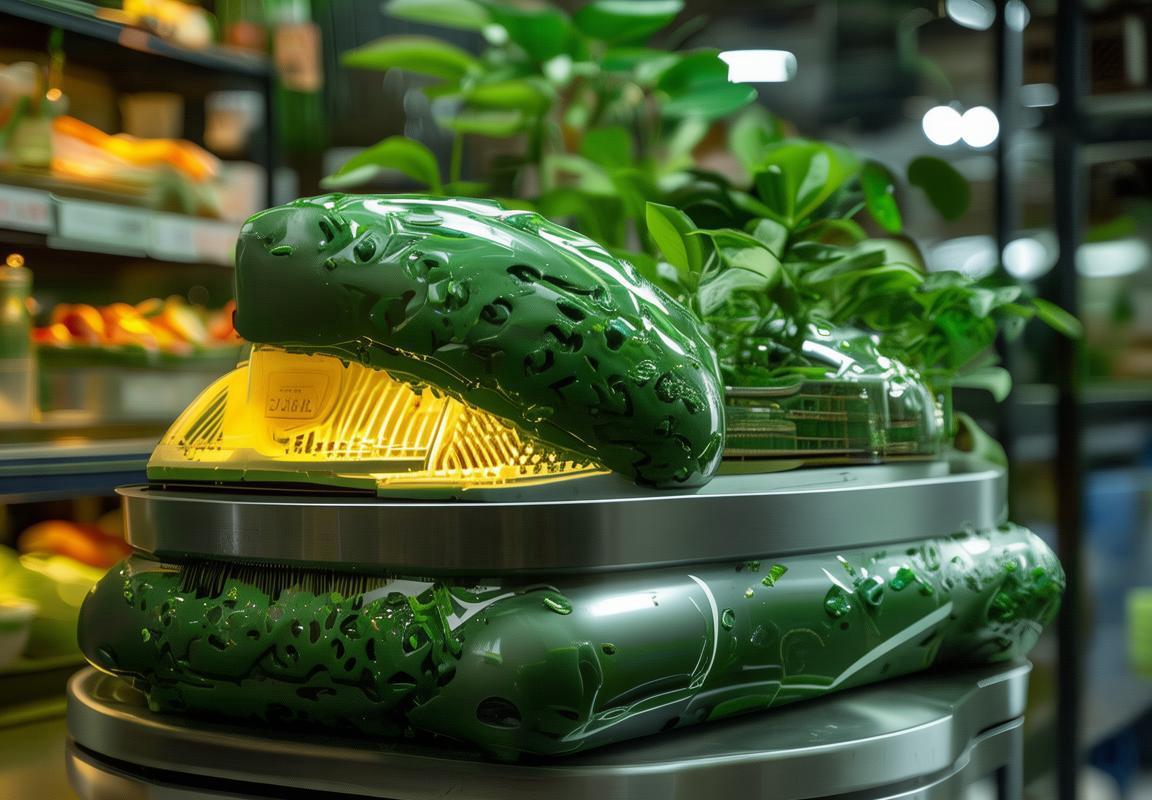
Distribution Channels and Retail Strategies
In the competitive landscape of the contact grill market, distribution channels and retail strategies play a pivotal role in reaching and engaging consumers. Here’s a closer look at how these elements shape the industry:
Retailers are the gatekeepers of consumer access to contact grills, and their strategies can significantly influence brand visibility and sales. From high-end department stores to specialized kitchen appliance shops, the variety of retail outlets caters to different consumer segments. Large-scale retailers like Home Depot and Lowe’s in the U.S. offer a wide array of contact grills, often featuring in-store demonstrations to showcase the product’s capabilities.
Online platforms have seen a surge in popularity, with major e-commerce sites like Amazon and eBay becoming go-to destinations for customers seeking convenience and variety. These online retailers not only provide a vast selection but also leverage customer reviews and ratings to guide purchase decisions. The ease of online shopping has democratized access to contact grills, making them more accessible to a broader audience.
Specialty kitchen stores, often found in upscale neighborhoods, offer a curated selection of high-quality contact grills. These stores are staffed by knowledgeable salespeople who can provide expert advice and personalized recommendations, enhancing the customer experience. This level of service is particularly valued by consumers who are passionate about grilling and are willing to invest in premium products.
The rise of home delivery services has also had a profound impact on the distribution of contact grills. Companies like Instacart and Amazon Fresh allow customers to purchase grills online and have them delivered directly to their doorstep. This service is especially appealing to busy individuals who prefer to shop from the comfort of their homes without the need to visit a physical store.
Wholesale distribution is another crucial channel for contact grill suppliers. Distributors act as intermediaries between manufacturers and retailers, ensuring a steady supply of products across various markets. They often have extensive networks and the logistical capabilities to handle large orders efficiently.
In recent years, the importance of direct-to-consumer (DTC) sales has grown. Many manufacturers are now establishing their own online stores to bypass traditional retailers and sell directly to customers. This approach allows for greater control over pricing, branding, and customer service. DTC sales also provide valuable insights into consumer preferences and buying habits, which can inform product development and marketing strategies.
Retail strategies are evolving to keep pace with consumer demands. Many retailers are embracing a hybrid model that combines online and in-store experiences. This omnichannel approach allows customers to browse products online, interact with them in person, and make purchases through multiple channels. It also enables retailers to leverage data analytics to personalize the shopping experience and increase customer loyalty.
Special promotions, such as limited-time offers and seasonal sales, are common tactics used by retailers to boost sales. These promotions often coincide with popular grilling seasons, such as summer, and are designed to encourage consumers to purchase contact grills for their outdoor cooking needs.
Additionally, the use of social media and influencer partnerships has become a powerful tool in retail strategies. Retailers are leveraging the reach and credibility of influencers to showcase the benefits and features of contact grills, thereby increasing brand awareness and driving traffic to their stores or websites.
Lastly, the emphasis on sustainability and eco-friendly products has influenced retail strategies. Consumers are increasingly seeking products that align with their environmental values, and retailers are responding by offering greener options and highlighting the sustainability efforts of their suppliers.
In conclusion, the distribution channels and retail strategies employed by contact grill suppliers are multifaceted and continually adapt to changing consumer preferences and market dynamics. From the variety of retail outlets to the rise of online sales and the importance of sustainability, these channels and strategies are essential for ensuring that contact grills reach the right customers at the right time.

Market Forecast and Future Growth Projections
In recent years, the market for contact grills has seen a surge in popularity, driven by consumer demand for convenience, health, and innovation. As we look ahead, the future of this market is poised for significant growth, with several factors shaping its trajectory.
The integration of smart technology has become a cornerstone in the contact grill industry. Grills are now equipped with features like temperature control, Bluetooth connectivity, and even AI-driven cooking recommendations, which not only enhance the cooking experience but also cater to the tech-savvy consumer.
Health consciousness is another driving force. As people become more aware of the benefits of grilling over frying, the demand for contact grills, which offer a healthier alternative, continues to rise. The ability to cook with less oil and maintain a consistent temperature has made these grills a favorite among health-conscious consumers.
The rise of outdoor living spaces has also played a role in the growth of the contact grill market. With more people spending time in their gardens and patios, the convenience of portable and easy-to-use contact grills has become increasingly appealing.
The market is not without its challenges. Competition is fierce, with established appliance brands and niche players alike vying for market share. This competition has led to a proliferation of features and innovations, but it has also made it difficult for suppliers to differentiate their products.
E-commerce has become a significant distribution channel, offering consumers a wide range of options and competitive pricing. However, the rise of online shopping has also brought about increased returns and warranty claims, which can impact supplier profitability.
As the market evolves, so too does the consumer base. Younger demographics, particularly millennials and Gen Z, are more likely to adopt new technologies and cooking methods. This shift in consumer behavior is prompting suppliers to focus on marketing strategies that resonate with these tech-savvy consumers.
Regulatory changes and certifications are also influencing the market. With a growing emphasis on food safety and sustainability, suppliers must navigate a complex web of regulations to ensure compliance. This can include certifications for materials used in the grills, as well as adherence to environmental standards.
The global supply chain remains a critical factor in the contact grill market. Disruptions in supply can lead to delays and increased costs, so suppliers must maintain strong relationships with their manufacturing partners and be prepared to adapt quickly to changes in the market.
In terms of future growth projections, the contact grill market is expected to see a steady increase in demand. This is driven by a combination of factors, including the increasing popularity of outdoor cooking, the health benefits associated with grilling, and the integration of smart technology.
Geographically, the market is expected to see significant growth in regions like North America and Europe, where there is a strong cultural affinity for grilling. Asia, particularly China and India, is also poised for growth as more consumers adopt Western cooking methods.
The future of the contact grill market is not without its risks. Economic downturns can lead to reduced consumer spending, and changing consumer preferences can shift the market landscape rapidly. Suppliers must be agile and adaptable, constantly innovating and responding to the evolving needs of their customers.
In conclusion, the contact grill market is on a trajectory of steady growth, driven by technological advancements, health trends, and changing consumer habits. Suppliers must stay ahead of these trends, focusing on innovation, sustainability, and customer satisfaction to secure their position in this dynamic market.

Contact Grill Supplier Selection Tips
Navigating the market for contact grill suppliers can be a complex task, especially with the myriad of options available. Here are some essential tips to consider when selecting a reliable supplier:
-
Quality AssuranceEnsure that the supplier you choose adheres to stringent quality control measures. This includes certifications like ISO, CE, and UL, which guarantee that the products meet international safety and quality standards.
-
Product Range and CustomizationA good supplier should offer a diverse range of contact grills, catering to different preferences and budgets. They should also be open to customization, allowing you to tailor the product to your specific needs or market trends.
-
Reliability and ConsistencyLook for suppliers who have a track record of reliability. Consistency in product quality, delivery times, and customer service is crucial for maintaining a strong business relationship.
-
Pricing and Cost EfficiencyWhile cost is a significant factor, it should not be the sole determinant. Compare prices with the quality and reliability of the product. A supplier offering the best value for money is often the best choice.
-
After-Sales SupportA reputable supplier will provide comprehensive after-sales support, including technical assistance, warranty services, and product maintenance. This ensures that any issues can be addressed promptly and efficiently.
-
Market ReputationResearch the supplier’s reputation within the industry. Look for reviews and testimonials from other businesses that have used their services. A strong market reputation often reflects a supplier’s commitment to quality and customer satisfaction.
-
Sustainability PracticesIn an era where sustainability is a growing concern, consider suppliers who prioritize eco-friendly practices. This could include using recycled materials, energy-efficient manufacturing processes, or offering sustainable packaging options.
-
Innovation and TechnologyChoose a supplier that invests in research and development. They should be at the forefront of technological advancements in contact grill technology, offering cutting-edge products that can give you a competitive edge.
-
Global Reach and LogisticsIf you’re looking to expand your market internationally, ensure your supplier has a global reach. They should be able to handle logistics efficiently, including shipping, customs clearance, and international delivery times.
-
Customized Marketing SupportA supplier that offers marketing support can be a valuable asset. They may provide assistance with product placement, promotional materials, or even joint marketing campaigns to help boost your sales.
-
Financial StabilityBefore finalizing a supplier, assess their financial stability. A supplier with a strong financial background is less likely to encounter operational issues that could disrupt your supply chain.
-
Communication and TransparencyEffective communication is key in any business relationship. Choose a supplier who is transparent about their processes, pricing, and any potential limitations. Regular updates and clear communication channels can prevent misunderstandings.
-
ScalabilityAs your business grows, you’ll need a supplier who can scale with you. They should be able to handle increased orders without compromising on quality or delivery times.
-
Industry ExpertiseSuppliers with a deep understanding of the contact grill industry can offer valuable insights and advice. Their expertise can help you make informed decisions and stay ahead of market trends.
-
Long-Term PartnershipConsider suppliers who are interested in building a long-term partnership with you. This commitment often translates into better terms, more personalized service, and a stronger business relationship over time.
By carefully considering these tips, you can select a contact grill supplier that aligns with your business goals and ensures a successful partnership. Remember, the right supplier can be a game-changer in the competitive landscape of the contact grill market.

Conclusion: Navigating the Contact Grill Landscape
Understanding the complexities of the contact grill market requires a keen eye for the nuances that drive consumer behavior and industry trends. From the sleek design of high-end models to the affordability of budget-friendly options, the contact grill industry has evolved significantly. Brands like George Foreman, Breville, and Instant Pot have become synonymous with this category, but it’s the subtleties in consumer preferences that truly shape the landscape.
-
Consumer Demand for ConvenienceThe modern consumer seeks convenience at every turn, and contact grills have capitalized on this trend. Compact and easy to clean, these grills have become a staple for busy households. The rise of single-serve or “grill on the go” products reflects a market that values quick and easy meals without compromising on quality.
-
Health and Wellness TrendsHealth-conscious consumers are driving the contact grill market. These appliances offer a healthier alternative to traditional grilling methods, as they help reduce the amount of fat and oil used. The popularity of lean proteins and vegetarian diets has also fueled growth in the market, with suppliers offering a variety of contact grills designed for both meat and plant-based cooking.
-
Technology IntegrationTechnology plays a pivotal role in shaping consumer preferences. Smart grills that offer digital controls, pre-programmed cooking settings, and even Wi-Fi connectivity are becoming more prevalent. The ability to monitor and control the cooking process remotely is a significant draw for tech-savvy consumers who want precision and convenience.
-
Marketing and Branding StrategiesBrands are investing heavily in marketing and branding to connect with their target audience. Influencer partnerships, social media campaigns, and product demonstrations at trade shows have become standard tactics. The emotional appeal of grilling as a social activity is often leveraged to create a sense of community around the brand.
-
Seasonal FluctuationsSeasonal trends also impact the contact grill market. As warmer weather approaches, consumers are more inclined to purchase outdoor cooking appliances. Conversely, the cooler months see a shift in interest, with consumers seeking indoor alternatives for grilling year-round.
Innovations in Contact Grill Technology
The evolution of contact grill technology is a continuous process, with suppliers pushing the boundaries of what these appliances can do. Here are some key innovations:
-
Heat Distribution TechnologyOne of the biggest technological advancements in contact grills is the improvement in heat distribution. Newer models feature precision heat sensors and adjustable heat settings that ensure even cooking and reduce the risk of hot spots.
-
Non-Stick SurfacesThe introduction of advanced non-stick surfaces has revolutionized the cooking experience. These surfaces not only make it easier to clean but also allow for healthier cooking with less oil, appealing to health-conscious consumers.
-
Smart FeaturesSmart contact grills now come with a range of features, from temperature control to pre-programmed cooking settings. Users can customize their cooking profiles and even share their favorite recipes with others, fostering a sense of community around the product.
-
Eco-Friendly DesignsSustainability is becoming a crucial factor in the design of contact grills. Eco-friendly materials and energy-efficient technologies are gaining traction, as consumers become more environmentally conscious.
The Impact of Sustainability on Contact Grill Suppliers
The emphasis on sustainability is reshaping the contact grill industry. Suppliers must consider several factors:
-
Sustainable MaterialsSuppliers are increasingly using sustainable materials in the production of contact grills. This not only reduces the environmental footprint but also aligns with consumer expectations for eco-friendly products.
-
Energy EfficiencyEnergy-efficient designs are not only cost-effective for consumers but also contribute to a greener planet. Suppliers are focusing on creating appliances that consume less energy while maintaining high performance.
-
Lifecycle AnalysisThe lifecycle of a product is under scrutiny. Suppliers must ensure that their grills are designed for durability and can be easily recycled or repurposed at the end of their lifespan.
Distribution Channels and Retail Strategies
The distribution and retail landscape for contact grills is diverse, offering suppliers various avenues to reach their target market:
-
Online SalesE-commerce has become a significant channel for contact grill sales. Suppliers must ensure their products are well-represented online, with detailed descriptions, high-quality images, and easy-to-use shopping experiences.
-
brick-and-mortar RetailersPhysical retailers remain important for many consumers. Suppliers should develop strong relationships with brick-and-mortar stores, offering training for sales staff and attractive display solutions to draw in customers.
-
Direct-to-Consumer (DTC)Some suppliers are opting for direct-to-consumer sales, which allows for a more personalized customer experience and the opportunity to gather valuable feedback.
-
Trade Shows and DemonstrationsParticipating in trade shows and hosting live demonstrations can help suppliers showcase the unique features of their contact grills, providing hands-on experiences that can lead to increased sales.
Market Forecast and Future Growth Projections
The market forecast for contact grills is robust, with several factors contributing to future growth:
-
Increasing UrbanizationAs urbanization continues to rise, more people are living in smaller spaces, making compact, efficient appliances like contact grills increasingly popular.
-
Health and WellnessThe growing focus on health and wellness will likely sustain demand for contact grills, which offer a healthier grilling option.
-
Technological AdvancementsContinued technological advancements will drive innovation and improve the user experience, attracting new customers and retaining existing ones.
Contact Grill Supplier Selection Tips
When selecting a contact grill supplier, consider these key tips:
-
Product QualityEnsure that the supplier maintains high standards for product quality and offers a range of options to meet different consumer needs.
-
Customer ServiceExcellent customer service is crucial, as it can make a significant difference in how smoothly your business operates.
-
Pricing and ValueCompetitive pricing and a good value proposition are essential for staying competitive in the market.
-
Innovation and DevelopmentLook for a supplier that invests in research and development, offering you access to the latest technology and market trends.
-
Reliability and LongevityChoose a supplier that is known for reliability and has a strong track record in the industry.
-
Sustainability PracticesIn today’s market, sustainability is a key differentiator. Look for suppliers that prioritize eco-friendly practices.
-
Customization OptionsConsider whether the supplier offers customization options that can help you meet the specific needs of your customers.
-
Marketing SupportA supplier that provides marketing support can help you promote your products effectively.
In conclusion, the contact grill industry is dynamic, with numerous factors influencing market trends and consumer preferences. By staying informed and selecting the right supplier, businesses can navigate this landscape successfully.